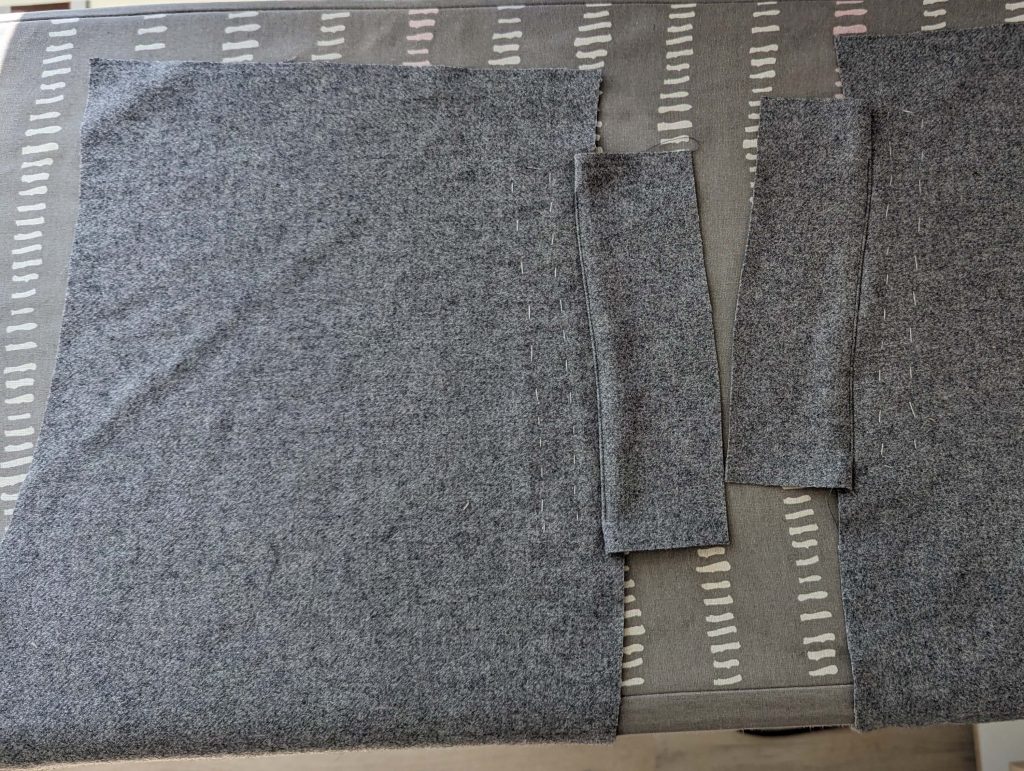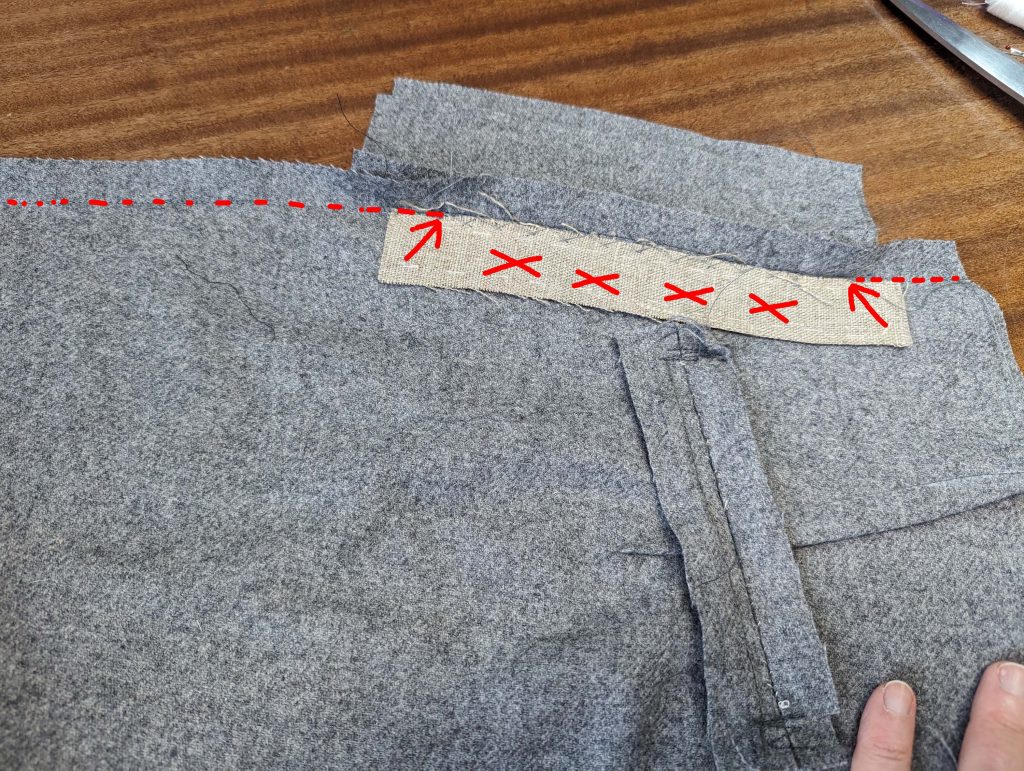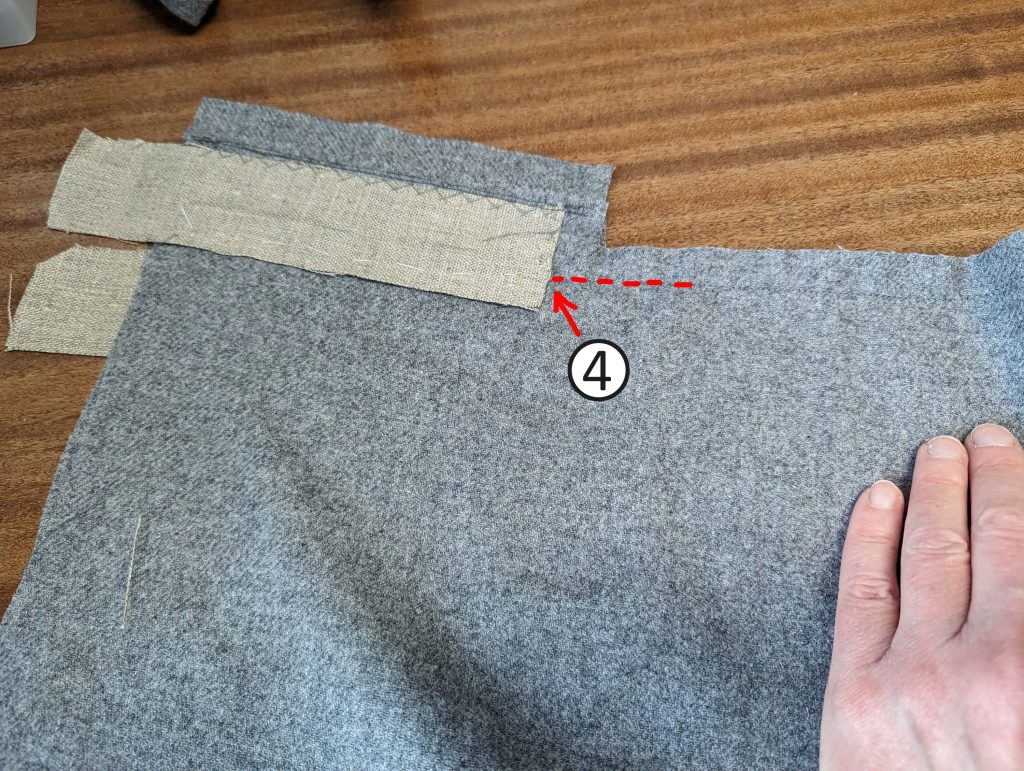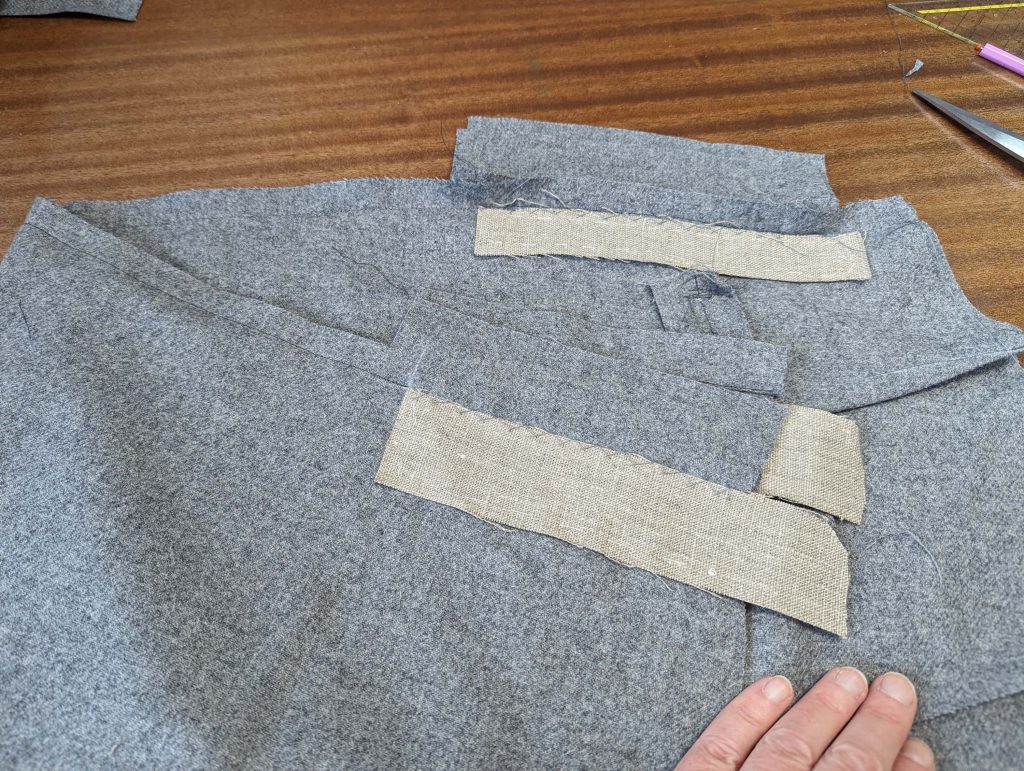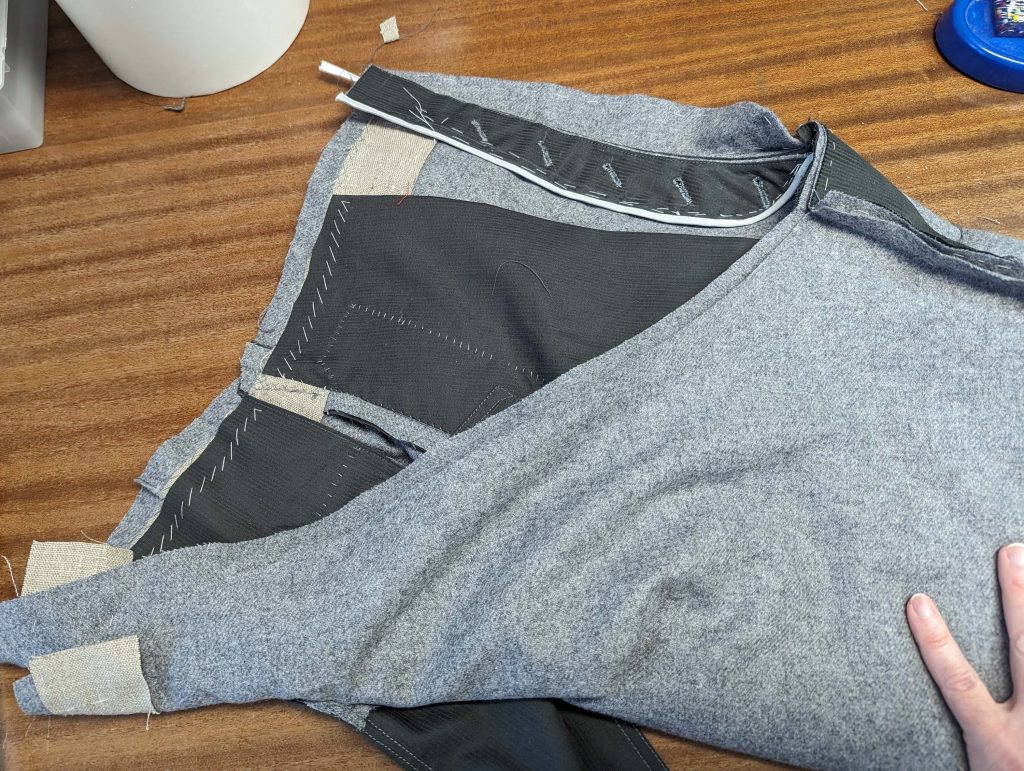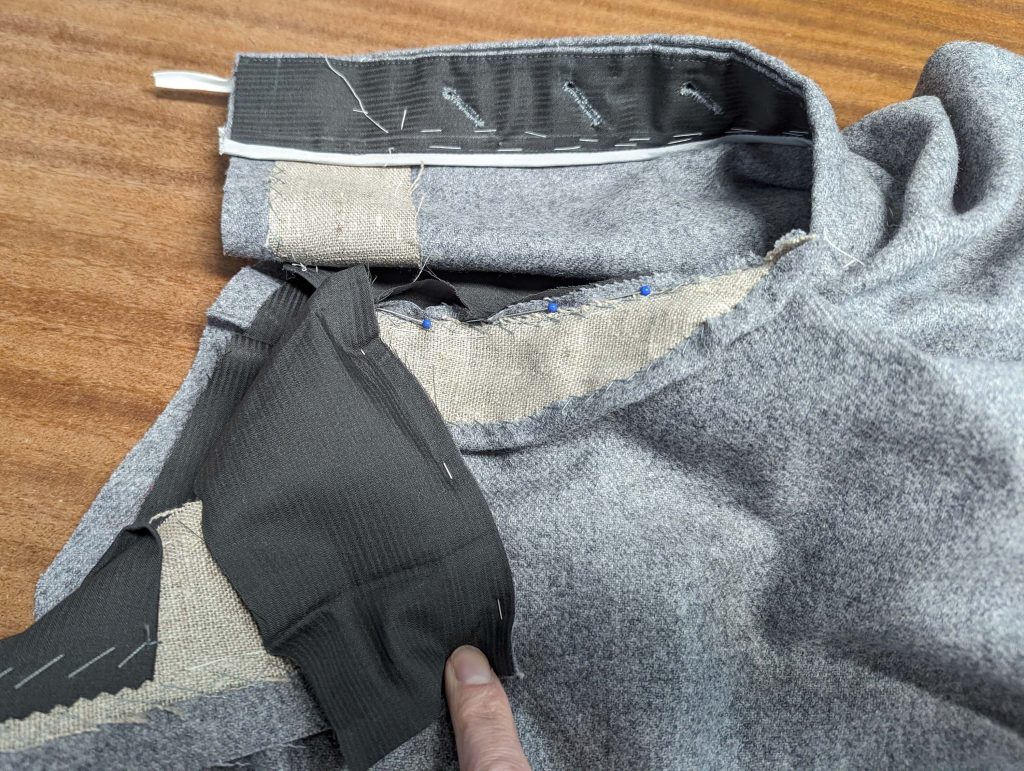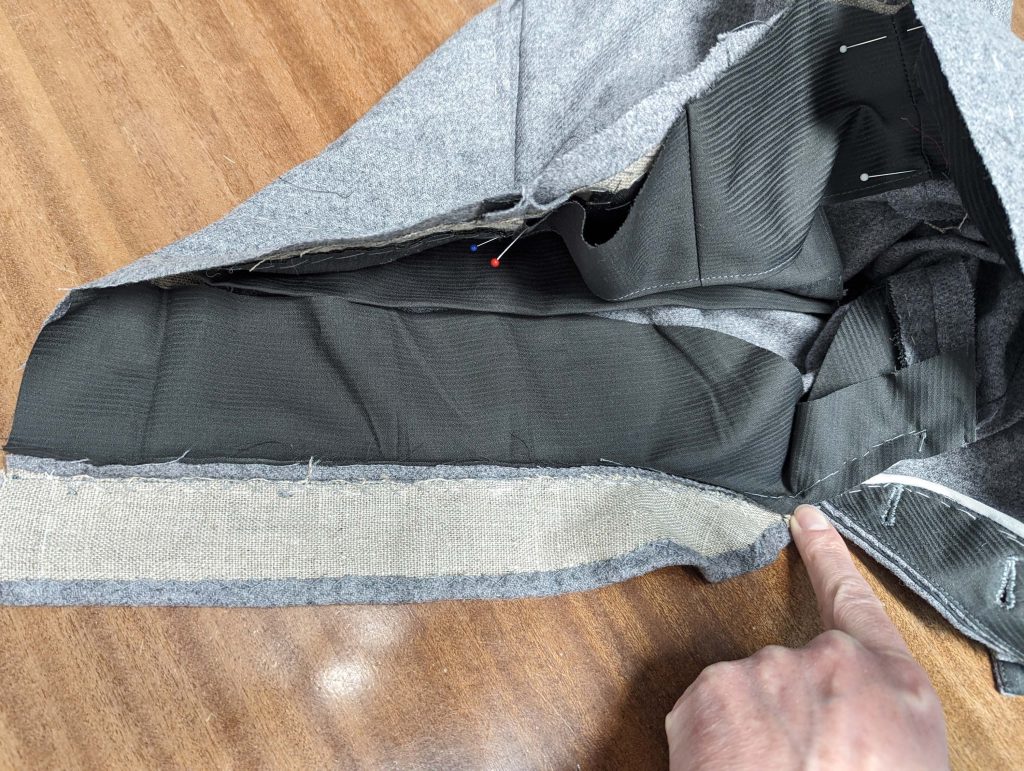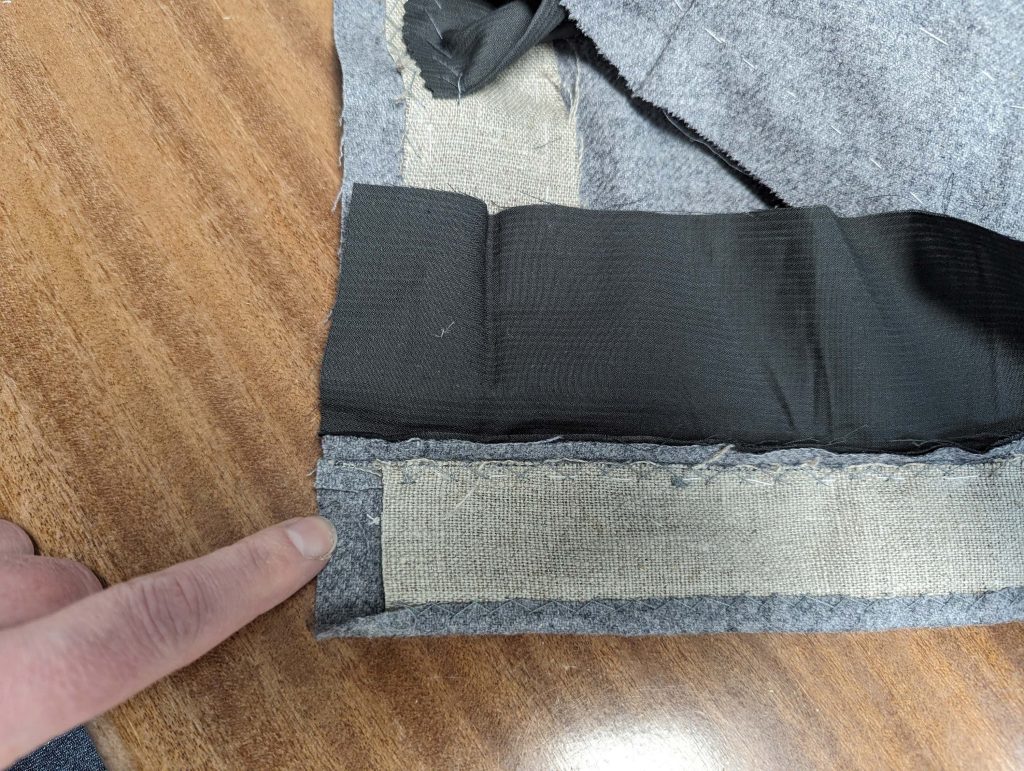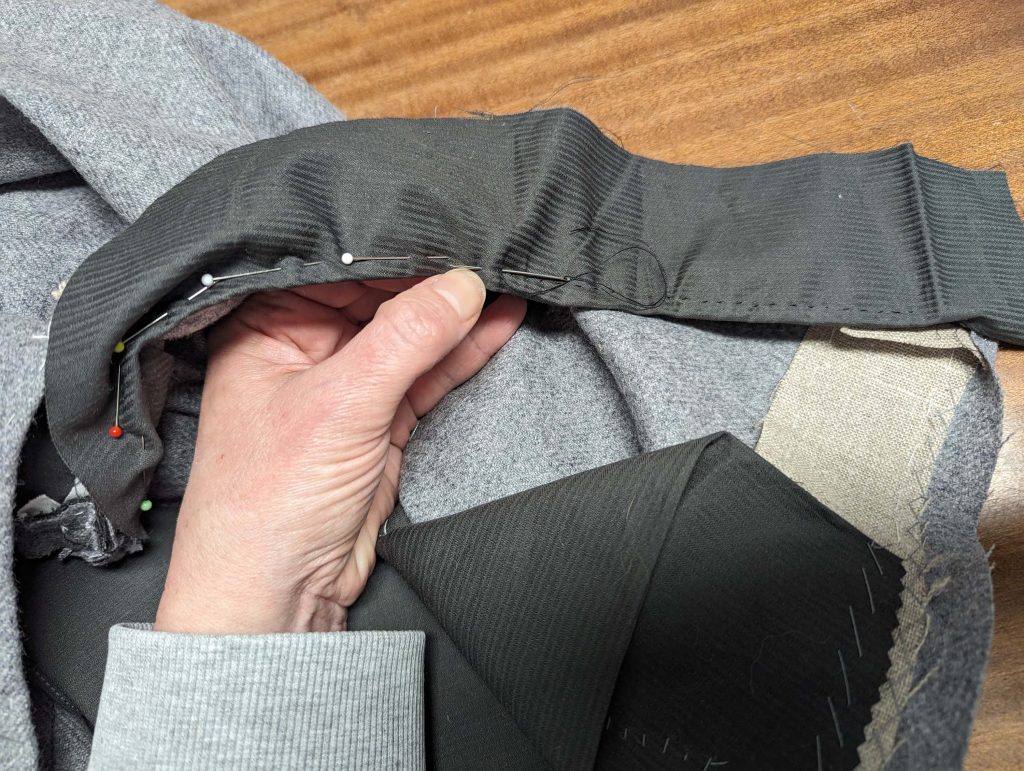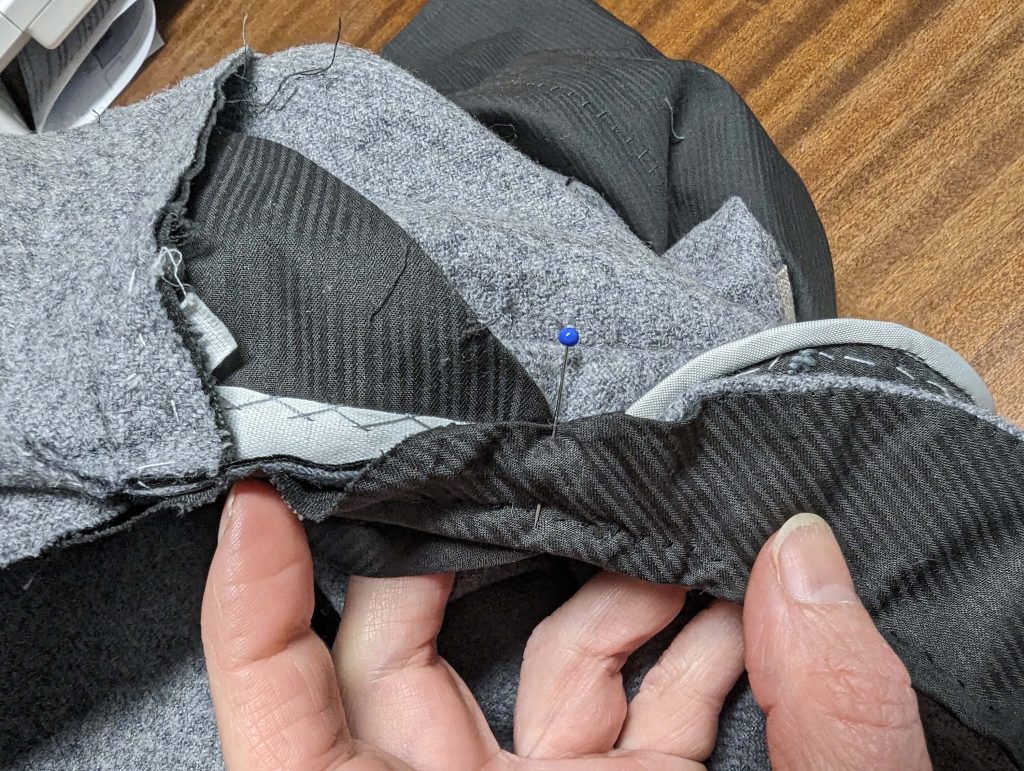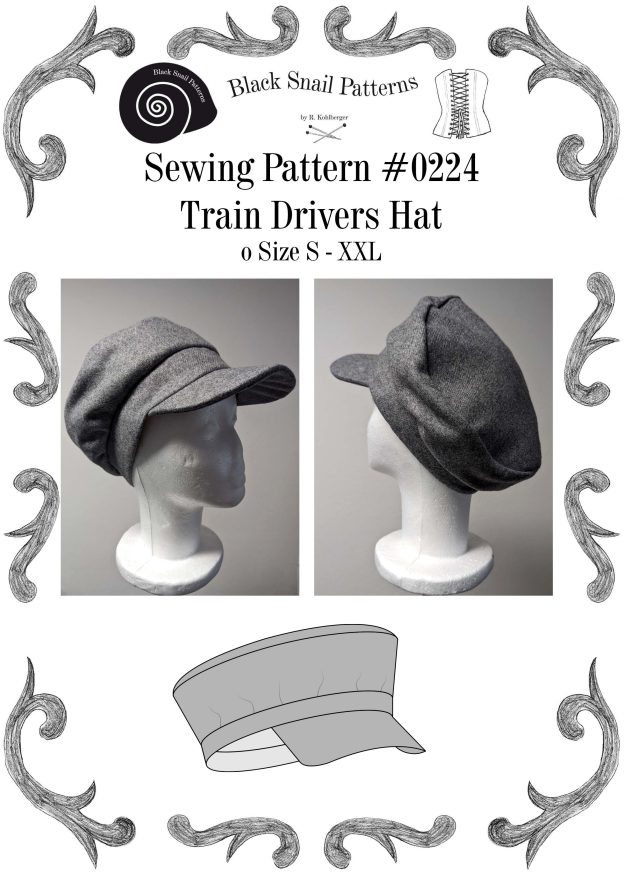After updating the Norfolk Jacket, we’re shifting our focus to the breeches pattern, with an upcoming blog post dedicated to its update. Traditional trousers tailoring isn’t as straightforward as it may seem; it took me several years to master, and now I’m excited to offer you a solid foundation for your projects.
For further research, numerous preserved tailor’s books and magazines from that era are available as free PDF scans on the internet, providing additional insights into materials, cutting, and sewing techniques. The breeches featured in this sewing pattern are based on a pattern from the following book: W. D. F. Vincent (circa 1900): The Cutter’s Practical Guide to Jacket Cutting and Making, London.
The trousers featured in the sewing pattern have a fly front, a grown-on waistband, and are designed to be worn with buttoned suspenders. Additionally, the width of the trousers can be adjusted using straps and a buckle at the back.
Durability was paramount for garments in the 19th century, so trousers were reinforced at critical points. They were basted to the wrong side of the fabric first, then stitched in place during construction. I made some mistakes while constructing the breeches, so I ask for your patience as I share my pictures and work through any challenges I encountered during the sewing process.
For the side pockets, the sewing pattern offers two methods for pocket construction: easy-to-sew in-seam pockets and the traditional tailored approach, which will be discussed here in detail. The hip pockets are optional, they are typically absent in most extant trousers.
The sewing techniques outlined in the instructions closely mirror the construction methods observed in extant garments and found in extant tailoring books.
Let’s start sewing step by step, starting with a mock-up as usual!
(1) Schneide all the pieces from the fashion fabric, lining, and interfacing, as indicated on the cutting diagram.
Weiterlesen



